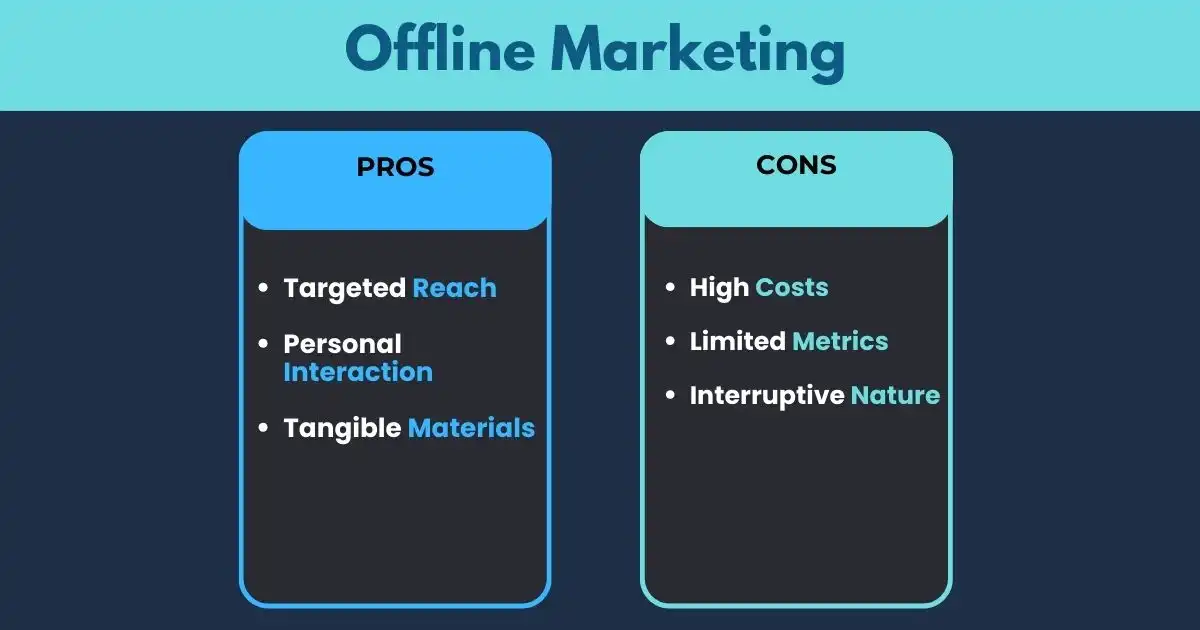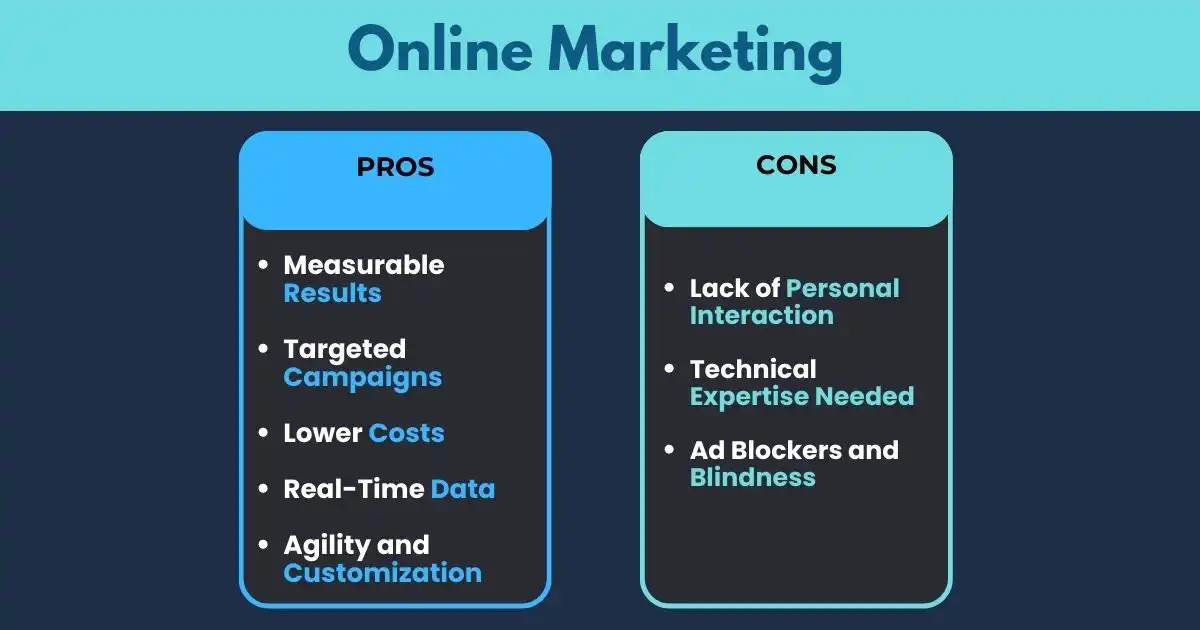As a business owner, you often need to make tough choices that affect your company’s growth. One of these choices is deciding where to spend your money – online marketing or offline marketing.
Every local business has a limited marketing budget, so you can’t promote everywhere.
Where and how you market your business can greatly influence even your customer’s choose you or a competitor. That’s why it’s important to understand which option is best for your business.
Offline Marketing

Online marketing is undeniably powerful despite advancements in technology, offline marketing remains a popular method to capture customer attention.
Tactics like billboards, print ads, direct mail, and radio or TV commercials keep your brand visible and can influence consumer decisions about which businesses to support.
Fast Company reports that about 65% of people are visual learners, showing how effective visual content can be in delivering messages and grabbing attention. This underscores the continued value of offline marketing for businesses.
Pros
- Targeted Reach – Traditional offline marketing can effectively target specific groups. For instance, CEOs who may not engage with emails or online ads can be reached through trade shows or print materials.
- Personal Interaction – Face-to-face interactions at expos, networking events, and referrals allow businesses to build stronger, more personal relationships with customers compared to digital methods.
- Tangible Materials – Brochures, flyers, and business cards serve as constant physical reminders of your brand. These materials are especially useful in corporate settings, where decisions often rely on credible, visible resources.
Cons
- High Costs – Offline marketing campaigns, such as TV, radio, or billboard advertising, can be expensive. Costs include not just the space but also production fees for videos, voiceovers, and graphic design, making it financially demanding.
- Limited Metrics – Measuring and tracking results is challenging. Traditional marketing casts a wide net, hoping to catch some interested customers, but it’s hard to pinpoint success rates.
- Interruptive Nature – Offline ads often disrupt the audience’s experience. If it’s a TV commercial or a cold call, these interruptions can irritate potential customers and reduce effectiveness.
Online Marketing

Online marketing has changed a lot in recent years.
What used to be just having a website is now a blend of creative campaigns that can build your brand, increase sales, and keep customers coming back.
As online marketing continues to grow, it can have an even bigger impact on your business. Learning how to use it the right way can help your business grow more than you expected.
Pros
- Measurable Results – Online tools like Google Analytics or CRM systems allow businesses to monitor and track marketing performance easily, providing actionable insights.
- Targeted Campaigns – Online platforms enable precise targeting based on age, gender, location, interests, and buying behaviors. This ensures marketing messages resonate with specific audiences.
- Lower Costs – Online marketing is generally more affordable than traditional methods. Social media engagement, email marketing, or SEO efforts can cost little to nothing, offering a high return on investment.
- Real-Time Data – Online marketing provides instant feedback. Businesses can quickly see how campaigns perform, adjust strategies, and test different approaches like A/B testing without waiting weeks for results.
- Agility and Customization – Real-time data collection allows businesses to tweak campaigns on the go. Marketing messages can even be customized dynamically based on audience behavior and preferences.
Cons
- Lack of Personal Interaction – Online marketing lacks the face-to-face element, making it harder to build trust and relationships with customers.
- Technical Expertise Needed – Successful online campaigns require a good understanding of digital tools, software, and platforms, which may require training or hiring skilled personnel.
- Ad Blockers and Blindness – Many users employ ad blockers, which can significantly limit your campaign’s reach. Additionally, some users may develop “banner blindness,” ignoring online ads altogether.
By understanding the strengths and weaknesses of both online and offline marketing, you can craft a strategy that combines the best of both worlds to suit your business goals.
Is Your Marketing Strategy Holding You Back?
When it comes to marketing, there’s no one-size-fits-all approach. While offline marketing offers personal connections and visible reminders, it can also drain your budget without clear results. On the other hand, online marketing can be more cost-effective and measurable, but it often lacks the personal touch that builds long-term loyalty.
It’s easy to get caught up in choosing one over the other, but the truth is, that combining both could be the turning point your business needs. Think of it like a well-rounded recipe—online marketing can drive awareness, while offline methods can solidify relationships.
Don’t just settle for what’s familiar. Take a step back and weigh your options carefully. A smart marketing blend could be the difference between staying stagnant and truly growing your business. The right balance is out there—find it, and your business could soar to new heights.
FAQs
What are all of the following are traditional online marketing tools except?
Traditional online marketing tools include social media advertising, email campaigns, SEO, and content marketing. All of the following are traditional online marketing tools except offline marketing methods such as print ads, billboards, or TV commercials.
Why do companies use both offline and online marketing channels?
Companies use both offline and online marketing channels to reach a wider audience and diversify their marketing efforts. By combining both, businesses can leverage the benefits of each—online channels for measurable results and offline platforms for building personal connections.
Which two are offline marketing platforms to increase brand visibility?
Billboards and event sponsorships are two effective offline marketing platforms to increase brand visibility. They can catch the attention of a wide audience and leave a lasting impression.
How can businesses use online and offline marketing channels together?
Businesses can use online and offline marketing channels together by integrating strategies that complement each other. For example, an online ad might drive traffic to an in-store event, combining the reach of digital with the personal connection of face-to-face interaction.
